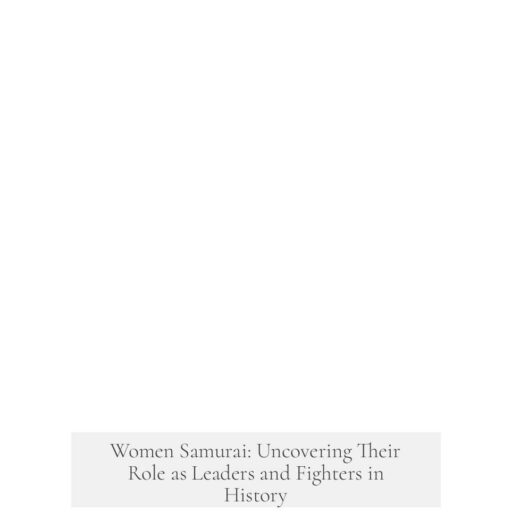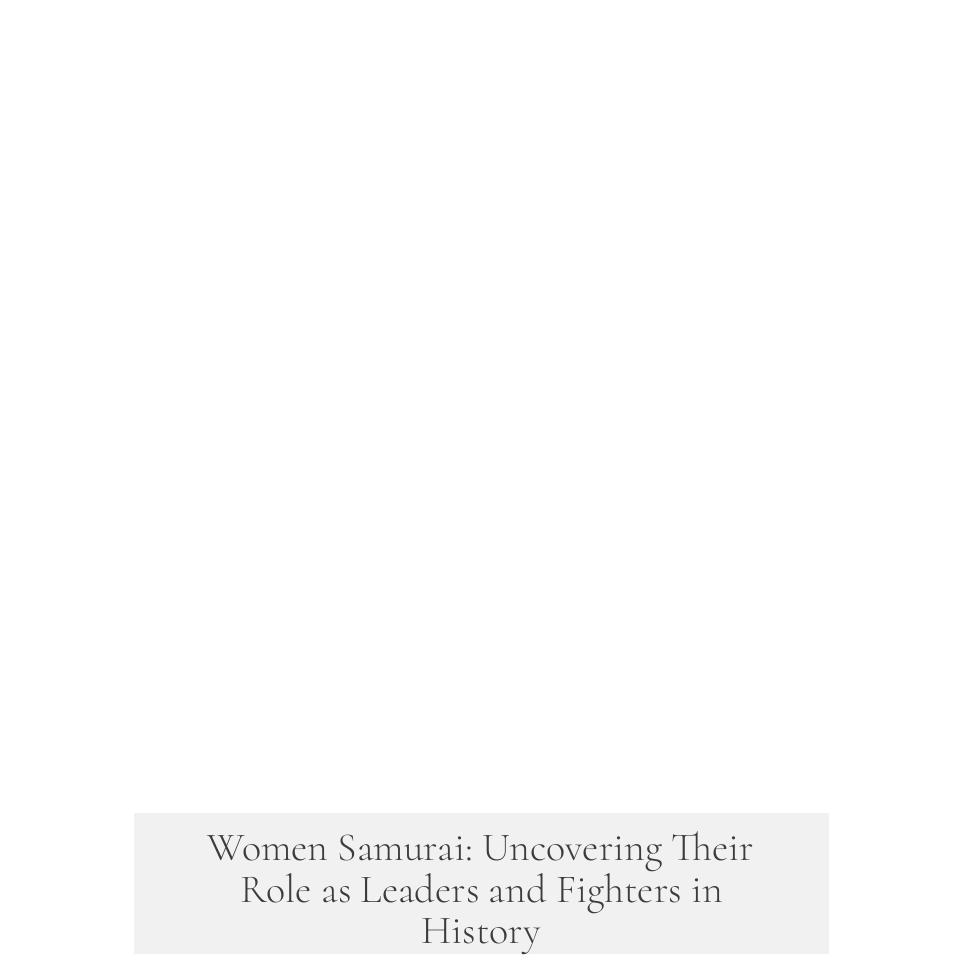Yes, there were women samurai who actively participated in leadership and combat roles during Japan’s feudal era. Prominent examples include Ii Naotora and Tachibana Ginchiyi, both of whom led samurai clans and demonstrated martial skill. Their influence challenges the common perception that samurai were exclusively male warriors.

Ii Naotora served as the head of the Ii clan, an important vassal to the Tokugawa clan. She not only led her clan but also took part in battles, which indicates her direct involvement as a samurai beyond mere symbolic leadership. Her position during a turbulent period in Japanese history illustrates that female samurai could assume high-ranking roles and engage in warfare.
Tachibana Ginchiyi presents another case. She became the leader of the Tachibana clan at just six years old, a rare situation reflecting her status within the clan prior to marriage. Historical accounts praise her martial prowess from a young age, suggesting she possessed the training and skills associated with samurai warriors. This demonstrates that some women inherited or earned their place in the samurai hierarchy through leadership and combat capability.

While these are notable examples, female samurai were relatively rare compared to their male counterparts. Women in samurai families often received martial training primarily for defense purposes, especially during sieges or assaults on their homes. However, records show that some did take on active combat roles or leadership under extraordinary circumstances.
For further details on female samurai and historical discussions on their frequency and roles, readers can explore specialized historical forums and scholarly discussions:

This topic intersects with both gender roles and the military culture of feudal Japan. While the majority of samurai were men, documented exceptions prove women could and did serve as samurai with authority and combat readiness.
- Female samurai like Ii Naotora and Tachibana Ginchiyi led clans and fought in battles.
- Women samurai were rare but played active defensive and leadership roles.
- Martial training for women focused on protection during crises.
- Historical evidence is available but limited compared to male samurai records.
Were there Women Samurai?

Yes, there were women samurai — female warriors who not only lived in the samurai era but also led clans and fought on battlefields. This might sound like the plot twist in a samurai movie, but it’s a genuine historical fact. Women like Ii Naotora and Tachibana Ginchiyi prove that the samurai sword was not just a men-only club.
Let’s unpack this fascinating chapter of Japanese history. How did women become samurai? What roles did they play? And why don’t we hear more about them? Spoiler alert: Their stories are compelling, but often overshadowed.

The Female Samurai: Leaders and Fighters
First, imagine a young girl becoming the head of a samurai clan. Tachibana Ginchiyi did exactly that. At just six years old, she inherited leadership of the Tachibana clan before she was even married. Martial prowess was not just expected of her but demonstrated, making her a prime example of a female samurai.

Then, there’s Ii Naotora, who ruled the Ii clan, a vassal to the powerful Tokugawa clan. Her position alone qualifies her as a samurai because the samurai class is about service, leadership, and honor under feudal Japan’s strict code. But she didn’t just sit on the throne sipping tea. Naotora actively led troops in several battles, proving she was as fierce as any male warrior.
These two are standout examples, but they aren’t the only female samurai. Japan’s feudal era included various women warriors who took up arms, especially in times of turmoil when male warriors were away at war. Such women were often called “Onna-Bugeisha,” directly translating to “female martial artist.” They practiced skills complementary to the samurai, including archery and naginata (a pole weapon).

Why Don’t We Hear More About Them?
Good question! The image of a samurai is often tied to stoic men in armor wielding katanas. History, however, is written by victors and often skewed toward dominant narratives. Women samurai didn’t fit the traditional mold and their exploits were less recorded or glamorized.
On top of that, the male-dominated samurai culture valued martial skills in men for battlefield reasons. Women’s martial training often aimed at home defense rather than open combat. But that doesn’t make their contribution any less valuable. When their clans were attacked, these women fought fiercely and protected their families and territories.
Exploring More: Where to Dig Deeper
If you want to become a history detective, several resources can point you in the right direction. Some Reddit history corners have fascinating discussions and collections of sources that detail female samurai presence and activities. Websites like:
These discussions are rich in historical facts, archaeological findings, and scholarly debates, perfect for anyone wanting to go #BeyondTheKatana and appreciate female warriors’ impact.
On Fighting Styles and Martial Arts
While the evidence confirms women’s roles as samurai, the specifics of their fighting styles require expertise beyond casual research. The martial arts practiced by female samurai, like naginatajutsu and kyudo (archery), often focused on agility and swift counterattacks. They trained to defend castles and families during sieges and surprise attacks.
It’s important to note that many details about their combat techniques remain in specialized martial arts circles. So, if you’re interested in the nuances of how these women fought, connecting with martial arts historians or current practitioners of traditional Japanese martial arts is a good next step.
Why Does This Matter Today?
Besides rewriting our samurai stereotypes, learning about women samurai empowers a broader understanding of gender roles in history. It challenges the assumption that martial and leadership roles were exclusively male. Knowing that a six-year-old girl could lead a clan or a woman like Ii Naotora could command armies offers a fresh perspective.
This perspective sparks important questions: How many women have been overlooked in history because they didn’t fit the expected narrative? What other untold stories are waiting to be discovered? It also inspires us to reconsider modern beliefs about leadership, courage, and gender.
Wrapping It Up: The Real Samurai Spirit
The spirit of the samurai isn’t about swords and armor alone. It’s about loyalty, courage, and resilience. Women like Ii Naotora and Tachibana Ginchiyi embody that spirit fully, proving that a samurai’s heart doesn’t care about gender.
So, next time you picture samurai, picture a woman too—leading battles, protecting families, and shaping history. After all, the past is richer and more diverse than the tales often told.
“It’s about time we include the ladies in the samurai stories. They didn’t just stand behind the men—they fought and led, sword in hand.”
Discovering these stories shows that history can surprise us. And sometimes, it’s the warriors you least expect who leave the strongest mark.



